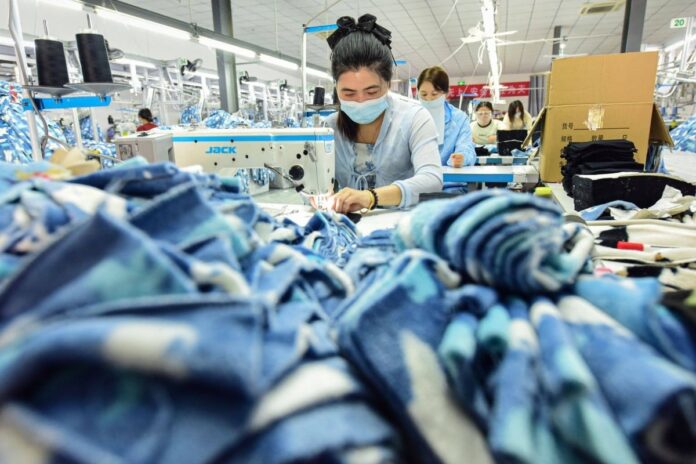
Just hours after Beijing and Washington announced a trade war truce, production lines across China sprang back into action.
Chinese factory owners said they quickly received a flurry of messages from US buyers, asking them to resume production on orders that had been frozen due to sky-high tariffs — and to expedite shipments as much as possible.
These beleaguered exporters are now rushing to take advantage of the 90-day halt in the tariff conflict. Wang Jie, who runs a shoe factory in Guangdong province, had been forced to shut down a production line in April after US clients suspended orders in response to Trump’s tariff announcement.
But now, the factory is operating at full capacity as those clients urge her to deliver while tariffs remain relatively low, Wang said.
“A client this morning asked us to resume production on May orders and ship as soon as possible,” Wang said, adding that the fate of orders from June to August will depend on how US-China trade talks progress.
US and Chinese officials reached a deal over the weekend to lift most tariffs on each other’s products, following weeks of tension as both sides hiked tariffs to record highs.
The agreement announced Monday will see the US cut tariffs on Chinese imports from 145% to 30% over the next 90 days, while China will reduce tariffs on US goods from 125% to 10%.
But the final tariffs will depend on the outcome of further negotiations between the world’s two largest economies in the coming weeks. If no deal is reached during the 90-day pause, tariffs will snap back to 54% and 34%, respectively.
While the temporary deal has brought much relief to many in China, some business owners told the Post they remain worried about future uncertainties and are actively working to minimize potential risks by reducing their exposure to the US market.
The factory where Jennie Ge works is one example. The business in Jiangsu province imports industrial machinery parts from the US and processes them into finished products for the domestic Chinese market.
Before May 12, the factory had frozen all orders from the US because China’s high tariffs made importing the parts commercially unviable, Ge said. But as soon as news of the new deal broke, “everyone rushed to ship and place orders,” she said.
But the currently reduced tariffs are still causing difficulties, Ge added. The factory plans to gradually replace US imports with similar products made in China, despite the lower quality of those components.
“The current tariffs are causing some losses, but we will prioritize meeting customer needs,” Ge said.
Tom Xie, who works for an electronics factory in the southern tech hub of Shenzhen, said the company’s US clients are pushing the factory to complete all their orders within 90 days.
“It seems like people are still skeptical that China-US tariffs can be stabilized,” Xie said.
For He Jushen, owner of a high-end furniture factory in Foshan, Guangdong province, the current agreement is welcome news. But the past few weeks have taught him one thing above all: the urgent need to diversify his client base.
“France, Australia, Canada, the UK, or something,” he said. “Relying solely on the US market is too passive — we shouldn’t let this market dictate our moves.”
A Major Breakthrough: US-China Trade Talks
The U.S. and China concluded a significant round of trade talks on Sunday (May 11), offering optimistic statements that brought a sense of relief to the global economy.





![[Photo Essay]: Experts, Managers, and Businesses Unite to Forge a Path Towards Sustainable Green Industry](https://xe.today/wp-content/uploads/2025/07/z678592918-218x150.jpg)


![[Photo Essay]: Experts, Managers, and Businesses Unite to Forge a Path Towards Sustainable Green Industry](https://xe.today/wp-content/uploads/2025/07/z678592918-150x150.jpg)


![[Photo Essay]: Experts, Managers, and Businesses Unite to Forge a Path Towards Sustainable Green Industry](https://xe.today/wp-content/uploads/2025/07/z678592918-100x70.jpg)






